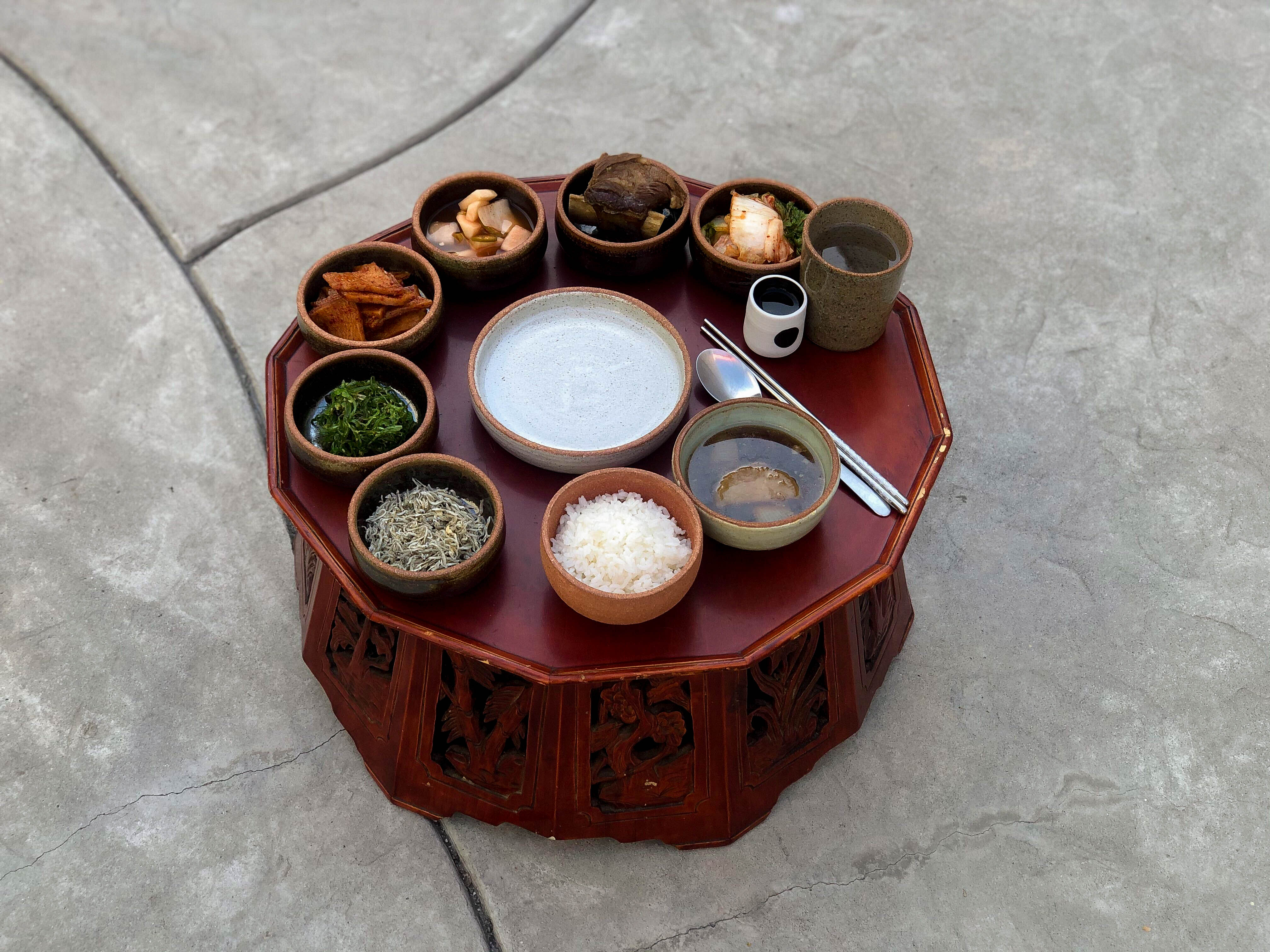Setting the Table
WHEN
January–March 2020
DURATION
3 months
TOOLS
Potter’s Wheel,
High-fire Clay & Glazes
January–March 2020
DURATION
3 months
TOOLS
Potter’s Wheel,
High-fire Clay & Glazes
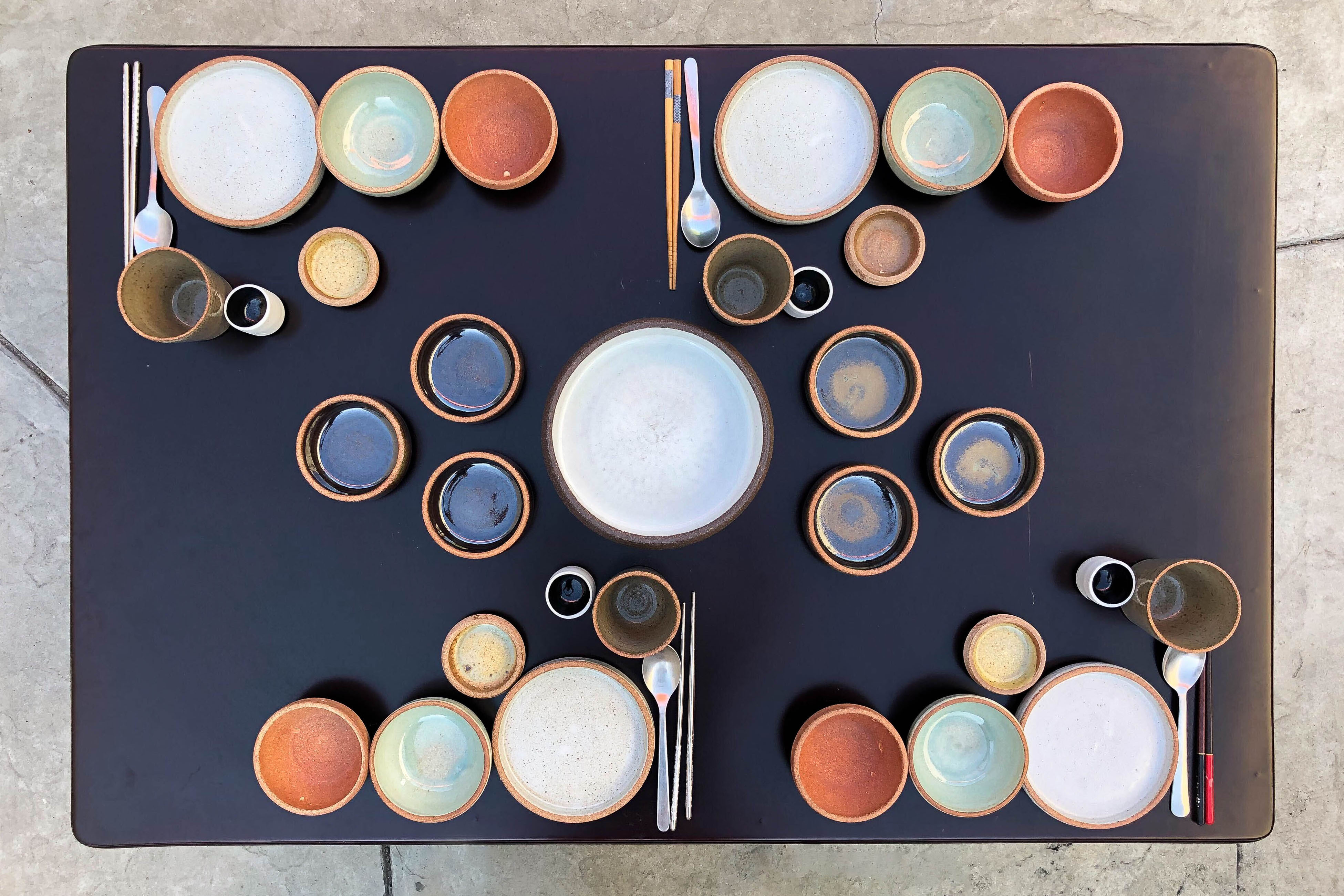
After a semester of learning the basics of throwing on the potter’s wheel, I wanted to take a deeper dive into exploring the materiality of clay and how different glaze treatments can impact ceramics. Dedicating a large portion of my last semester at USC to Setting the Table allowed me to have an escape from the chaos of my senio year, but also improve my technical throwing skills and understanding of clay. With the guidance of my ceramics professor, Thomas Muller, I embarked on an independent study of the tactile and cultural characteristics of traditional Korean dinnerware. Although I was not able to complete the set due to the studio’s closure for COVID-19 precautions, I am proud of how much I have grown as a ceramicist and designer.
Eating at a full dinner table with family and friends is one of the things I miss the most during these times. Food has always been at the core of how I connect and interact with loved ones, and reflecting on this project now makes me realize the importance of in-person interactions. Growing up, my job during dinner was to set the table-- to portion the banchan in their dishes, scoop the steaming rice, and lay out the utensils. My mom quickly followed me with hot bowls of soup and bubbling soy-braised meat to rest on the trivet.
Eating at a full dinner table with family and friends is one of the things I miss the most during these times. Food has always been at the core of how I connect and interact with loved ones, and reflecting on this project now makes me realize the importance of in-person interactions. Growing up, my job during dinner was to set the table-- to portion the banchan in their dishes, scoop the steaming rice, and lay out the utensils. My mom quickly followed me with hot bowls of soup and bubbling soy-braised meat to rest on the trivet.
The Components
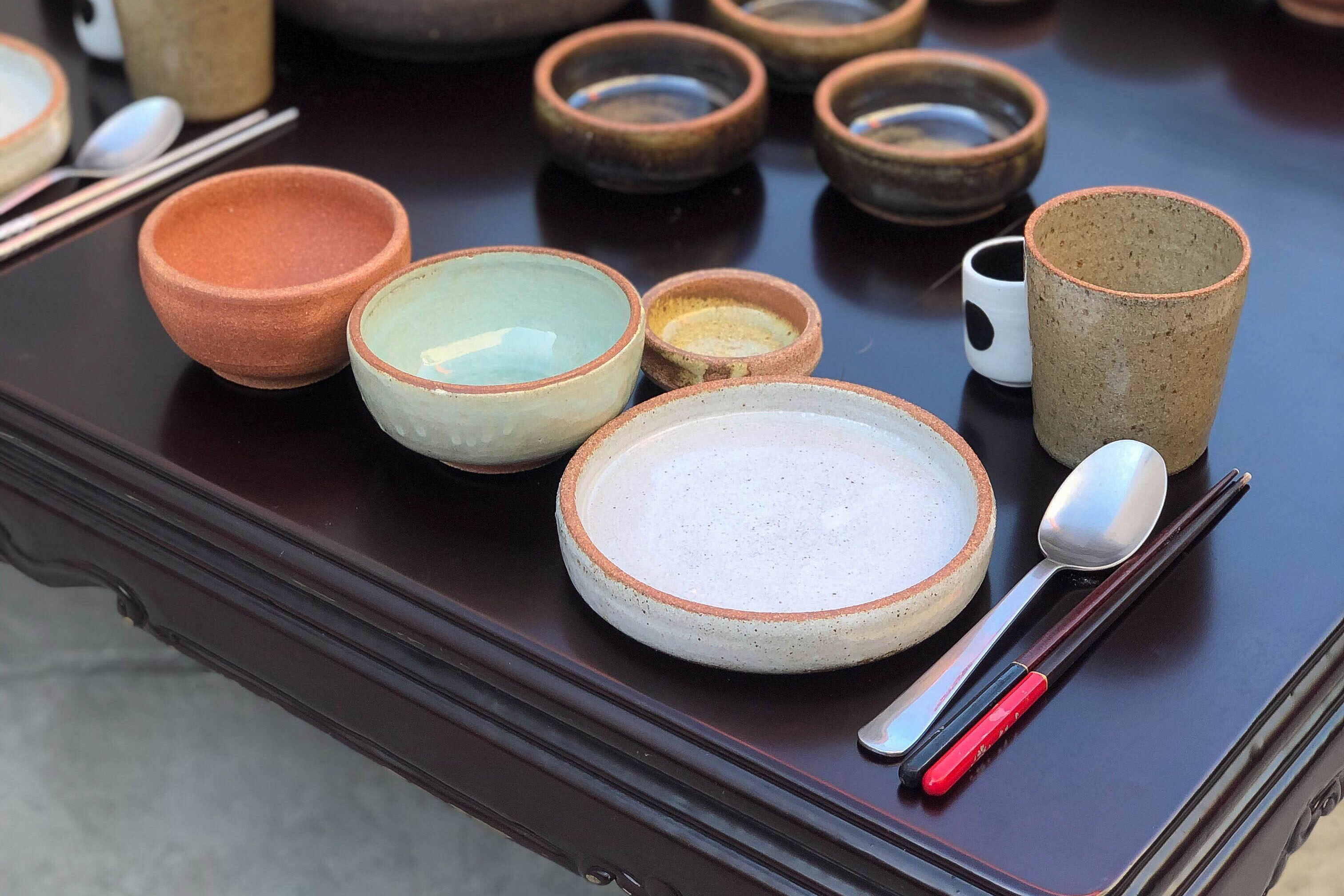
Like many Asian cultures, eating food is a communal experience in Korea. Everyone has their own rice and soup bowls, but the bulk of the food– side dishes (banchan), stew, and main meat dish– is shared amongst everyone. The hungry chopsticks and spoons create a web of arms across the table, and dishes are passed to and fro. The image above is a close-up an individual’s dinner set. From left to right, there is a rice bowl (밥 그릇), soup bowl (국 그릇), small plate (압 접시), spoon (숟가락), and chopsticks (적가락). I also created a small sauce dish for soy sauce or soybean paste, along with a soju glass and water cup (물 컵). The dishes all echo a similar rotund form, with added details such as a cleaned rim & skirted foot. The colors vary from each type of dish, but together they create a harmonious and bright eating experience.
Rice Bowl
The rice bowls are glazed with the same glaze as the yellow sauce dishes, but due to the unexpected nature glaze firing, the bowls came out as a brick-orange color. Although this was not the intendedd color, I think they still compliment the set well.

Soup Bowl
For the soup bowl, I wanted the glaze to compliment the various soups it will contain. Most Korean soups are red, brown, beige, or white, and many traditional soups are served in stone pots (돌솥), which are made of dark brown, almost black clay. Although going with a dark glaze seemed to be an obvious answer, I wanted the set to be a bit more colorful and fun. For this reason, I opted to move forward with this light celadon.
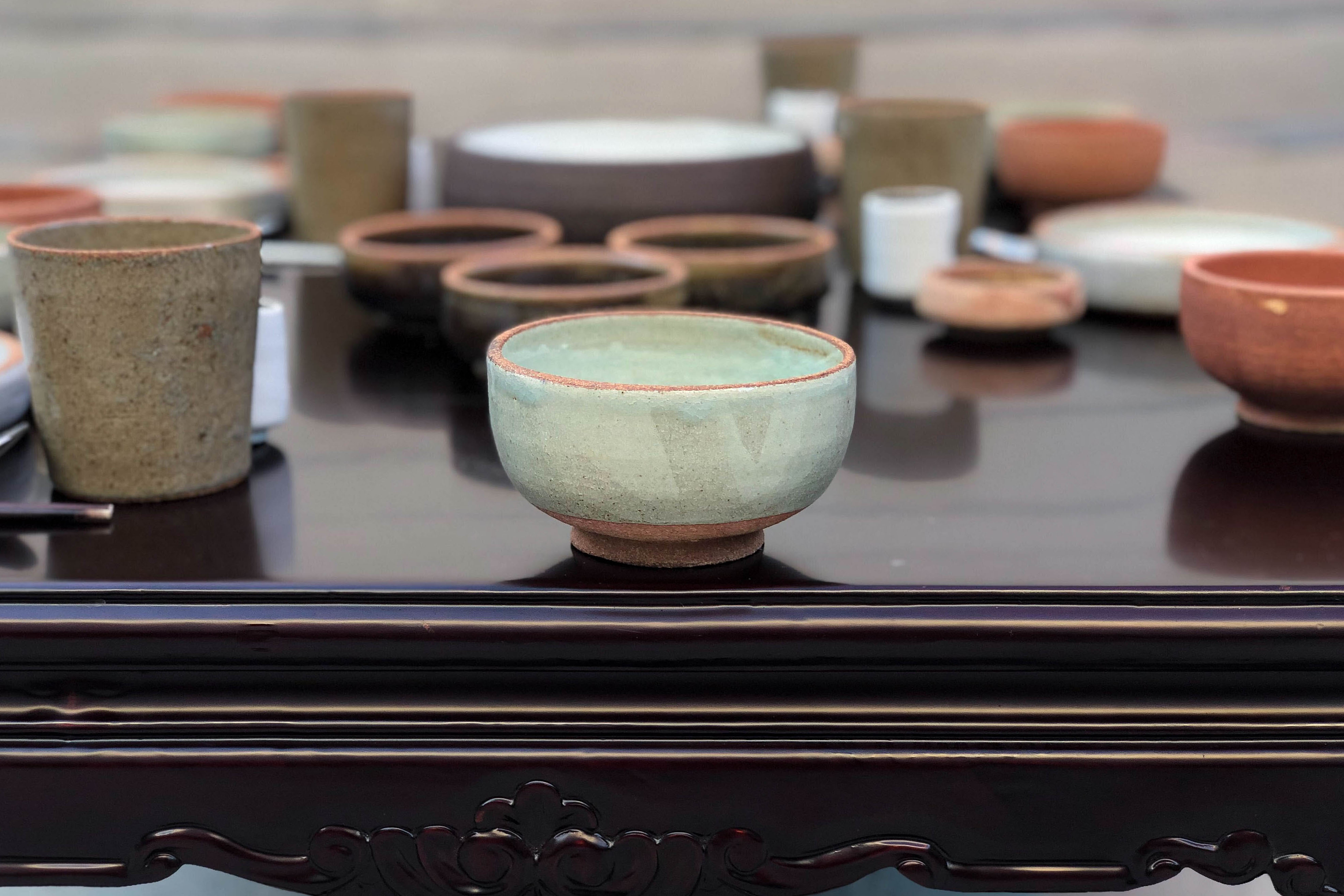
Small Plate
Because Korean meals are so communal, each individual usually has their own 압 접시, which directly translates to “front plate.” These small plates usually fill up with the diner’s picks of banchan and meats.

Sauce Dish
Similarly to all of the other pieces, I wanted to sauce dishes to compliment whatever would be put in them (soy sauce, red pepper paste, sesame oil, etc). The yellow glaze wasn’t as vibrant and opaque as I was hoping, but unanticipated results like this are part of creating ceramics.
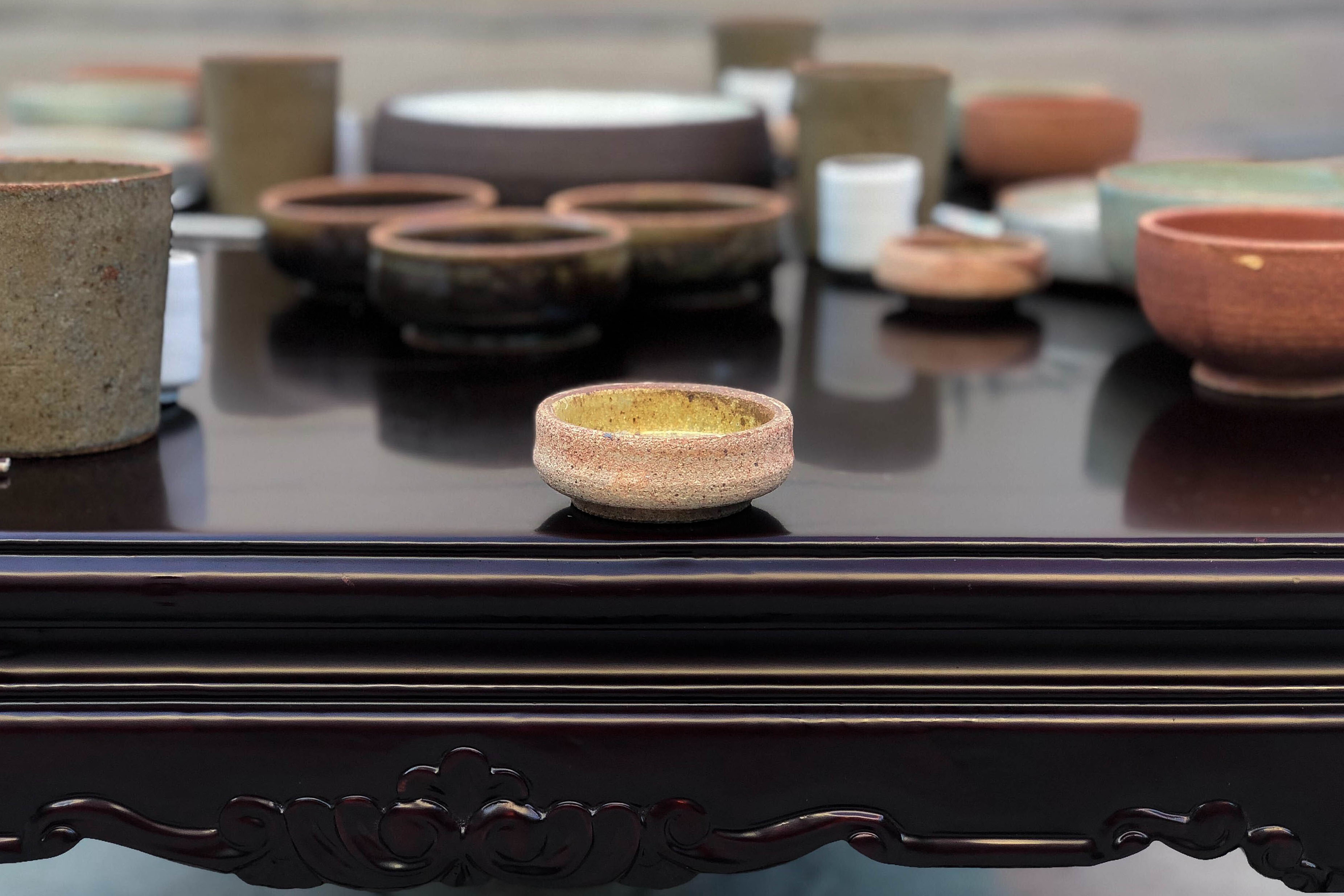
Soju Glass
I decided to create the soju glasses out of porcelain to nod at the traditional Korean soju glasses that are made of porcelain and have illustrations of women on them. However, I wanted to simplify the decorative glasses and give them a more graphic style to align with the rest of my ceramics.
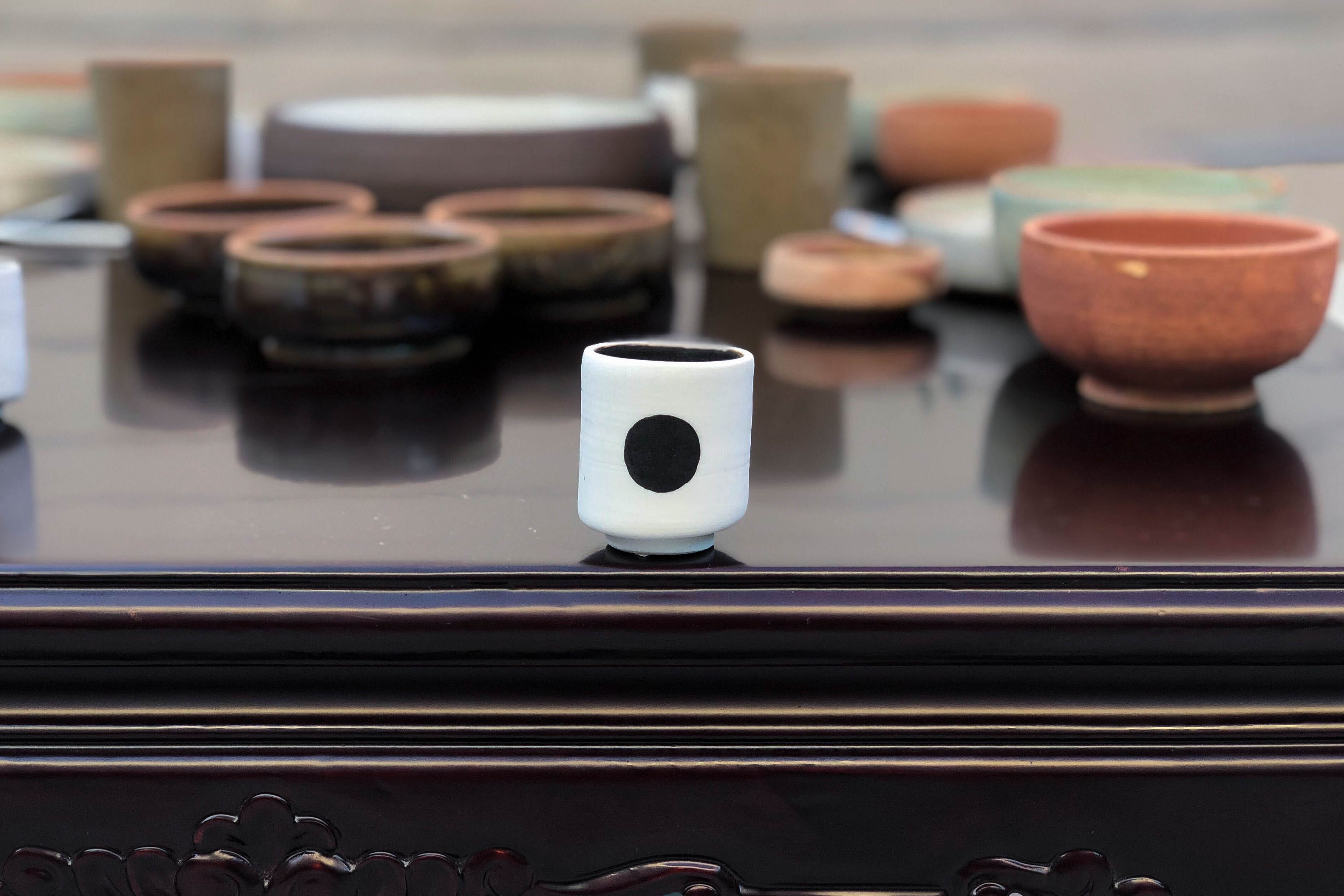
Water Cup
The form of this cup was inspired by the metal cups found at the hole-in-the-wall Korean restaurants that I love to eat at. The metal cups are easily stackable and relatively small.

Banchan Dish
I was only able to create 6 banchan dishes before the studio shut down, but had I had more time, I would have liked to have thrown double. The most basic Korean meals have at least 3 side dishes, but larger or celebratory meals can have around 20.
The darker glaze used on the dish will allow the green, red, and yellow banchans in them to pop!
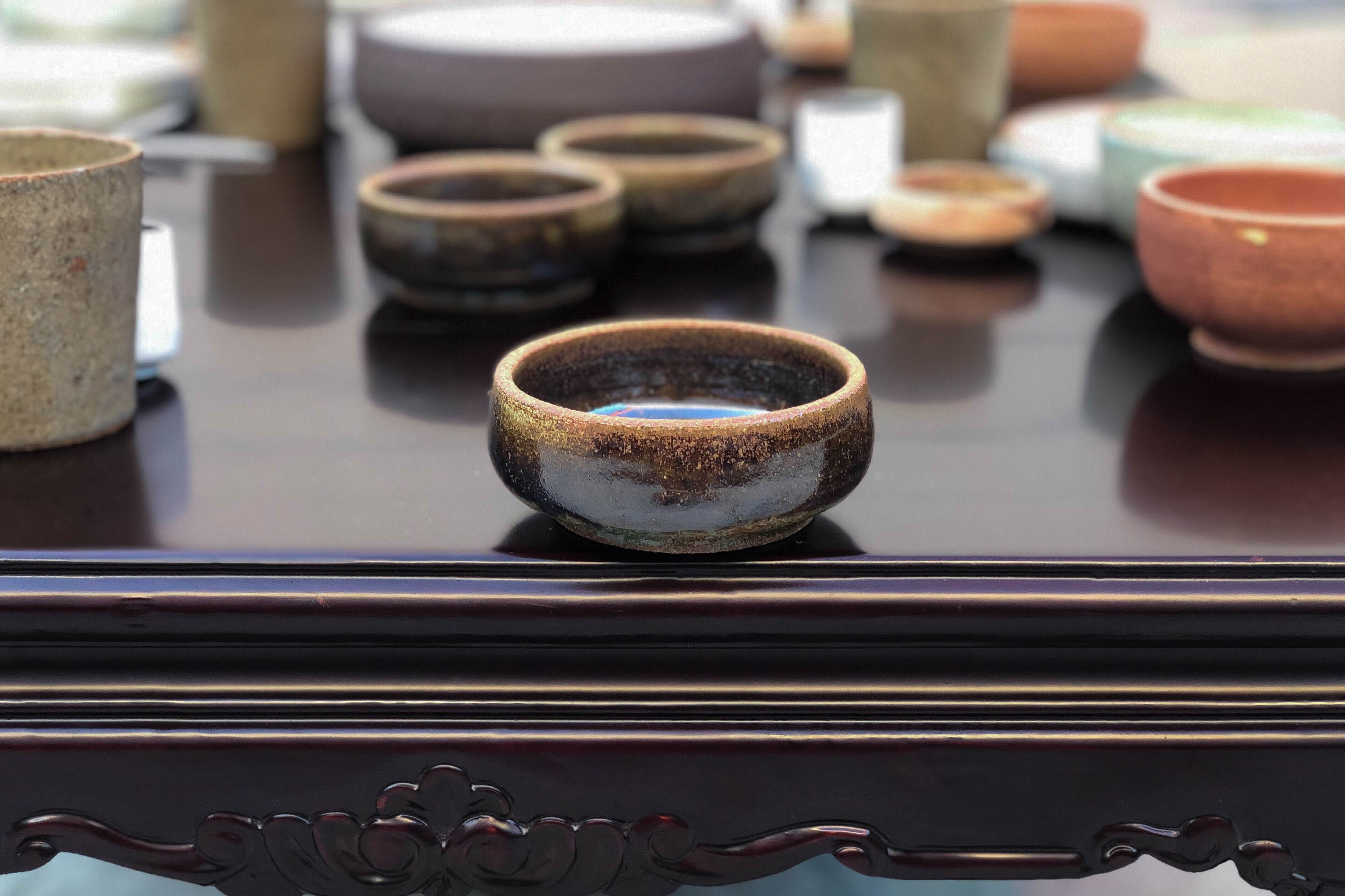
Serving Dish
This large, flat dish is meant to house braised meats, glass noodles, salads, etc. It is the center piece of the table. This dish is made of an extremely groggy clay, as you can see on the surface. Throwing with it was quite painful, synonymous to rubbing your hands on gritty sandpaper. The large pieces of stone embedded in the clay makes it harder to manipulate, but the end result is incomparable to any other material. The bright white glaze on the inside creates a contrast against the dark, raw clay body and is a blank canvas for whatever is served in it.
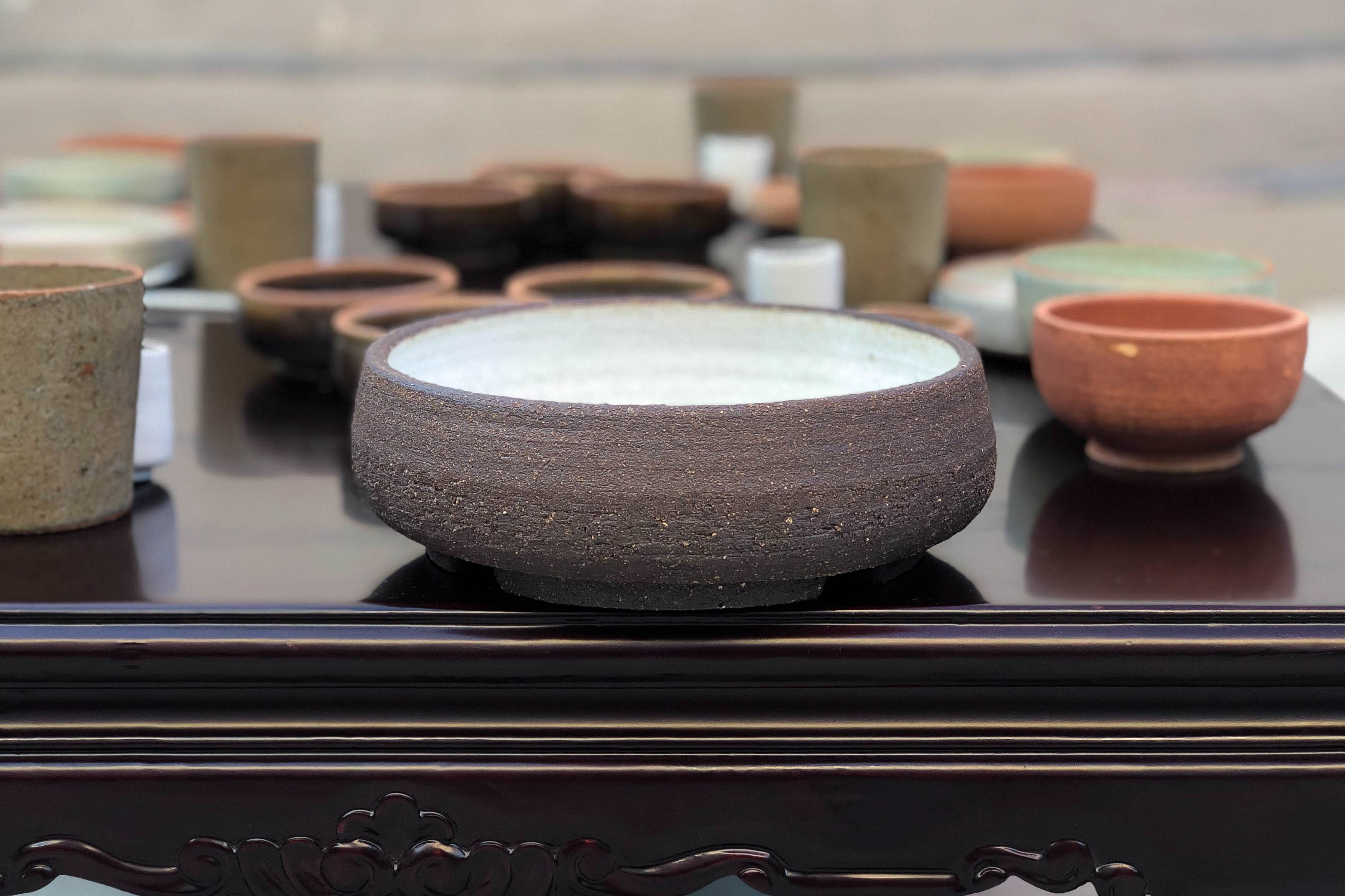

This 31-piece dinner set will be gifted to my mom for always supporting my dreams to go into a creative field. This set is a testament to the values she instilled in me as a child, of being persistent, curious, and patient.
The Process
Many traditional Korean ceramics dishes are made of porcelain, which allow them to be very light and smooth, but I wanted to incorporate a more modern and tactile twist to my dinnerware. After testing different kinds of silkier and groggier (clay with little bits of rocks and sand) clays, I decided to use Longbeach, one of my favorite dark body clays, for most of the dishes. Because this clay has some grog, it enhances the depth of glazes and adds some texture, physically and visually. The dark specks and complexity on the dishes are the result of different stones and sands that are mixed together in Longbeach.
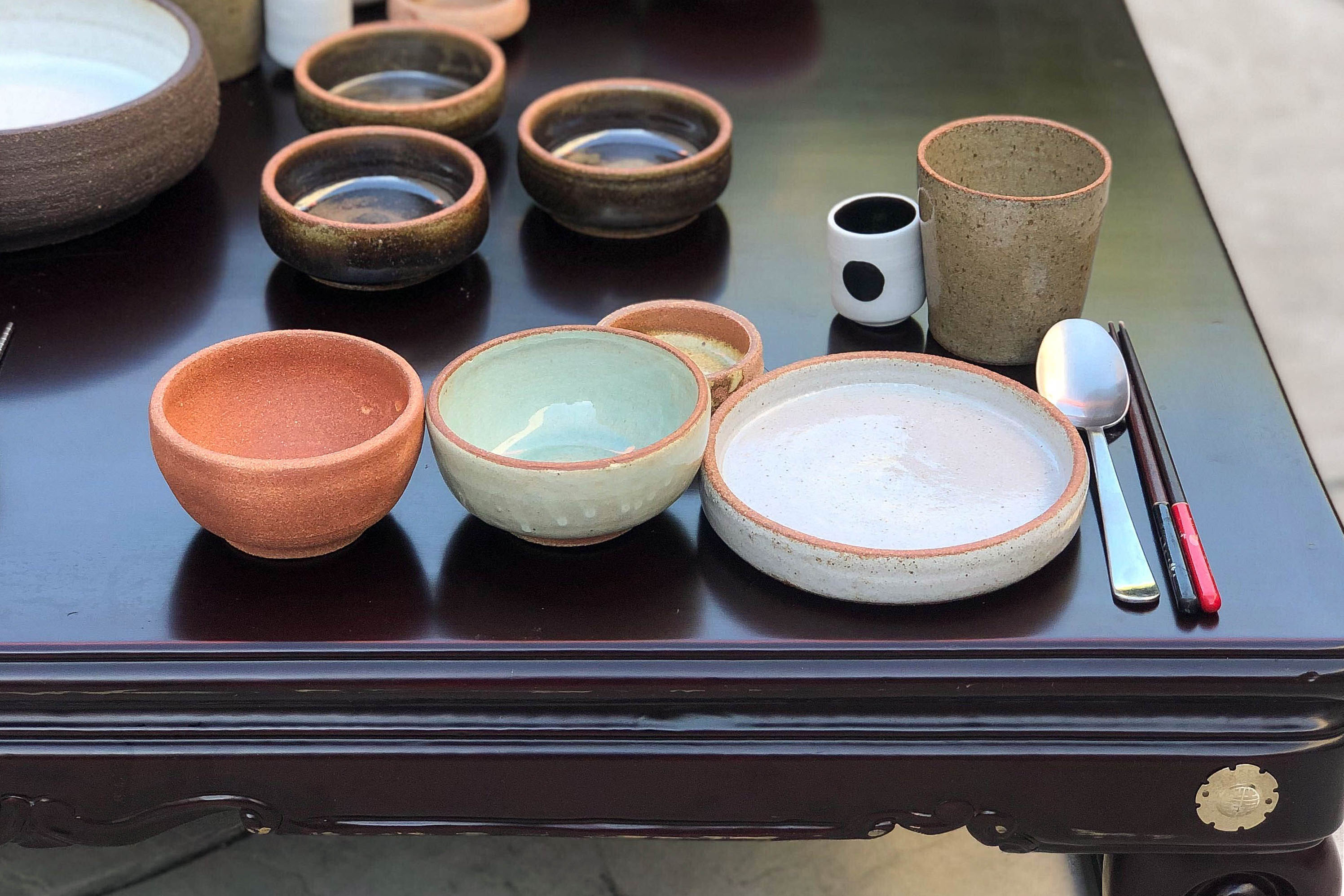
Throwing
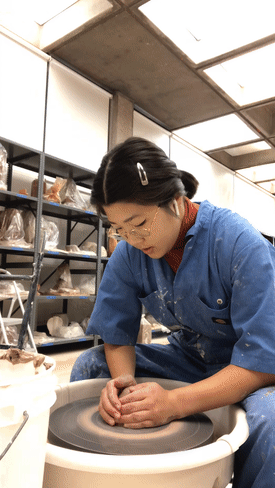
To create matching sets of each dish for 4 people, I went through hundreds of pounds of clay. I weighed each ball of clay to ensure I started off with the same amount and used rulers and calipers to measure the proportions of each dish. For a set of 4 soup bowls, I threw ~20 bowls before getting into the rhythm of knowing how far to pull the walls.
![]()
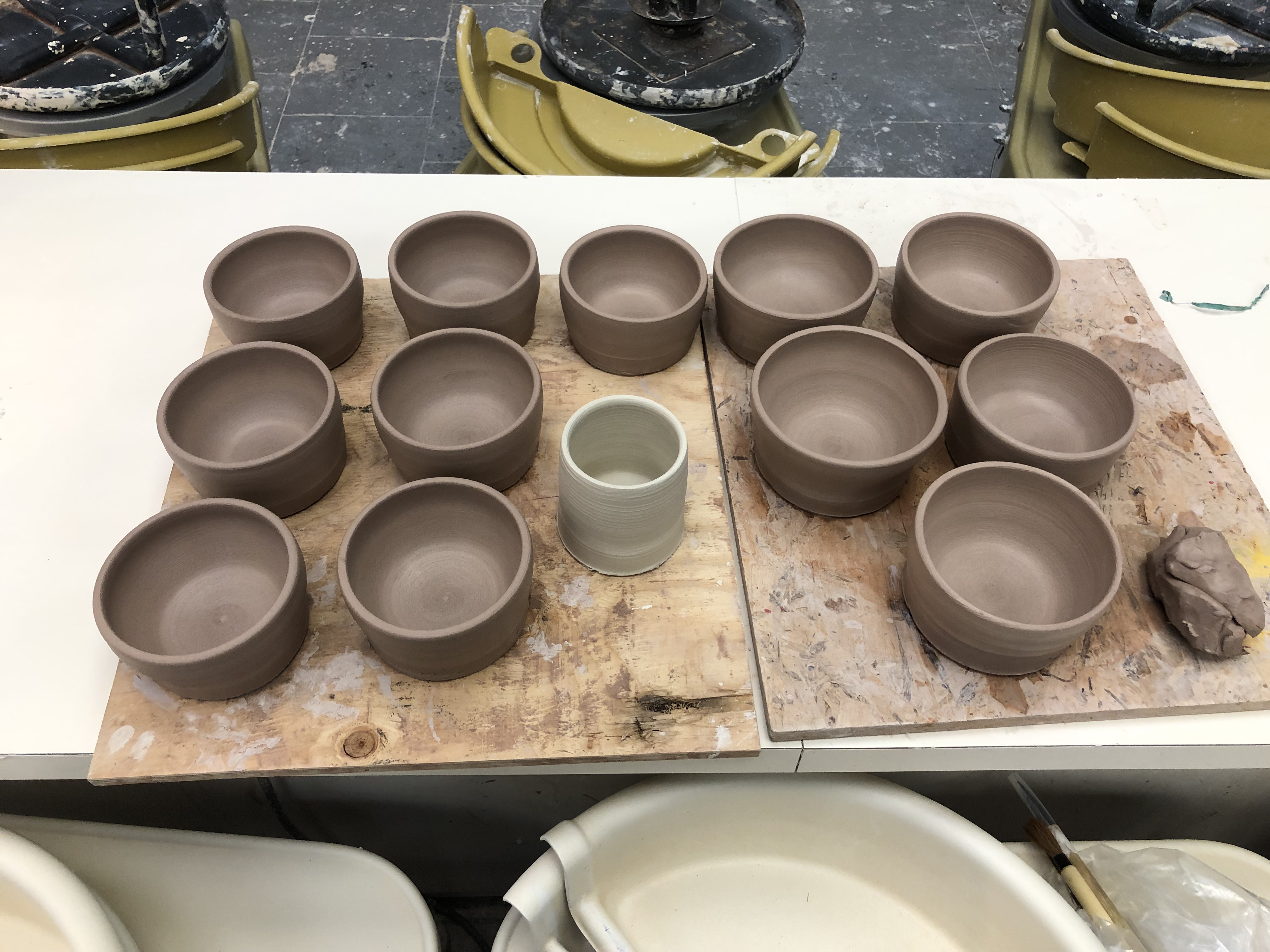
Trimming

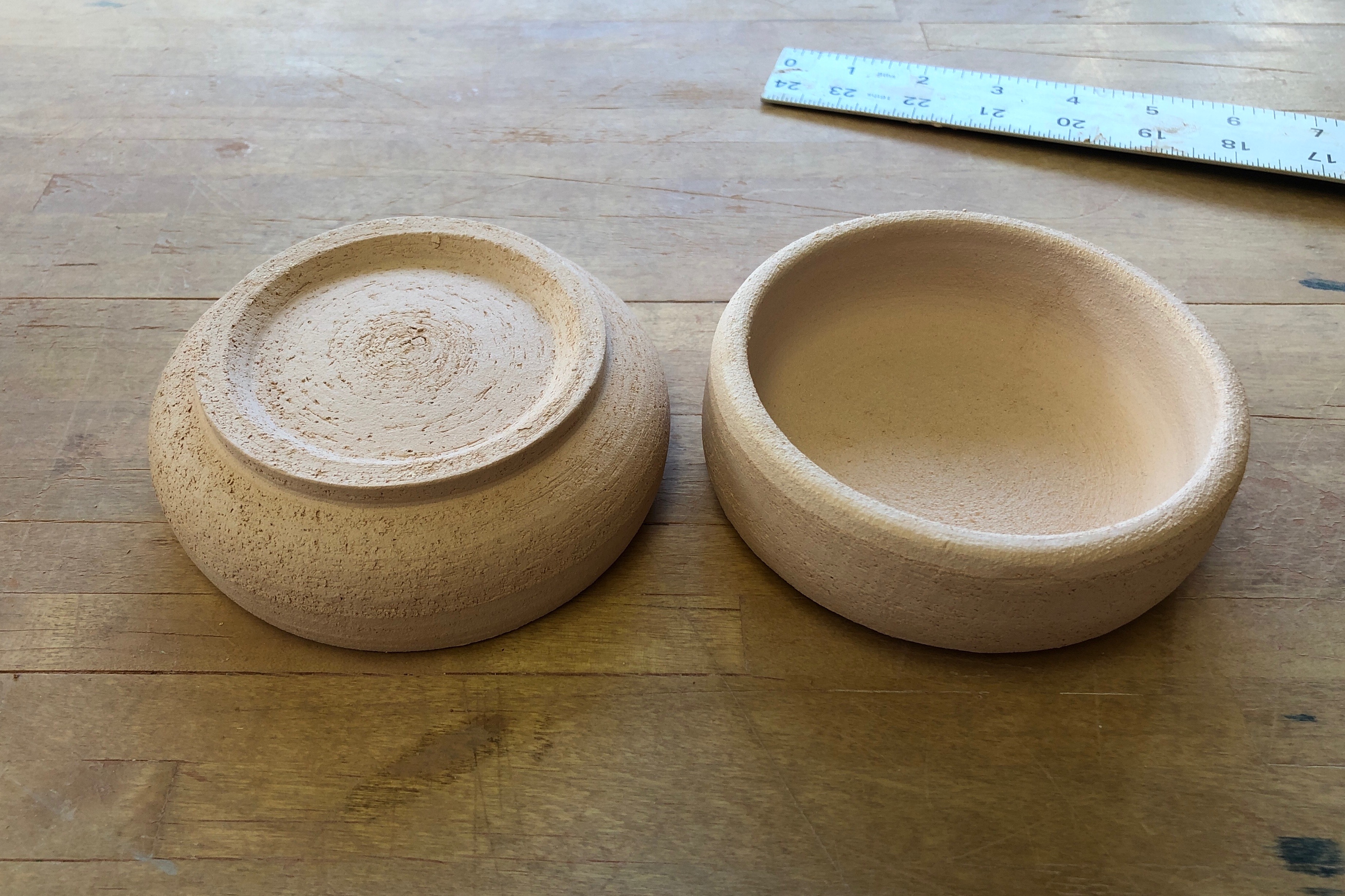
I love throwing because it is meditative and I am able to explore different forms and be one with the clay. But there is nothing quite as satisfying as trimming. Ribbons of clay that look like papparadelle flow off of the base, lightening the piece and finishing it off. I explored two different styles of feet-- an angled, skirted foot and footless. I decided to add angled, skirted feet to most of my dishes to make them easier to lift off of the table.
Glazing

Choosing what glazes I wanted to use for my dinnerware was quite a feat. Glazing had always been the part of ceramics that I found very daunting. When pieces go into the kiln, all control goes out the window. As a designer, I am accustomed to having complete antonomy over every detail. But when it comes to glazing, a piece that is meant to be red, may come out gray if there isn’t enough oxidation-- or vice versa. The slightest discrepency can completely change the outcome of the glaze, which also makes it impossible to replicate something. Ceramics is imperfect. I’ve grappled with it, but have learned to be more flexible and accept the unexpected. But with that being said, I still try to have some control by doing tests in advance.
I decided to clean the rim of the dishes to expose the raw clay body, because Longbeach’s natural texture and color is truly beautiful. The cleaned rim gives a more graphic and modern feel to this traditional set of dishes. It also subtly connects the dishes together, although they are different colors.
Dishes in Action
